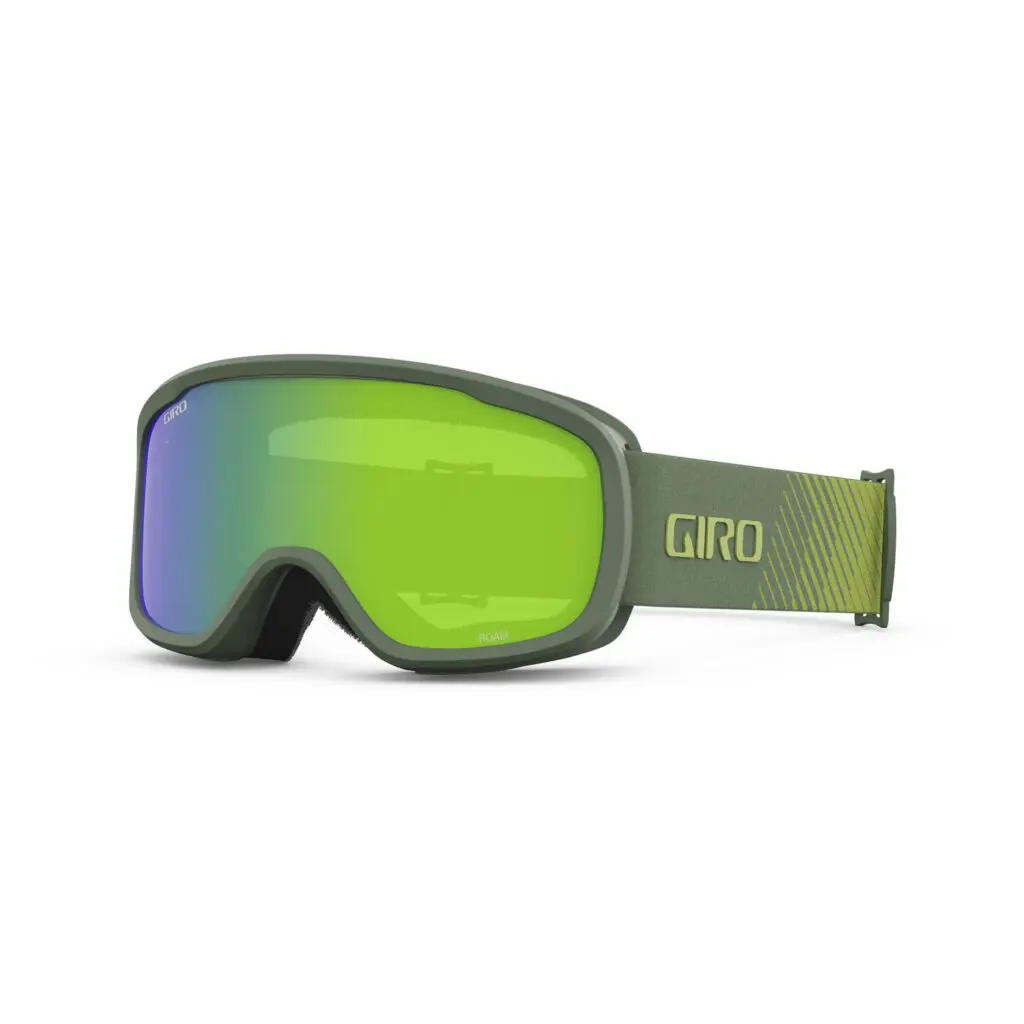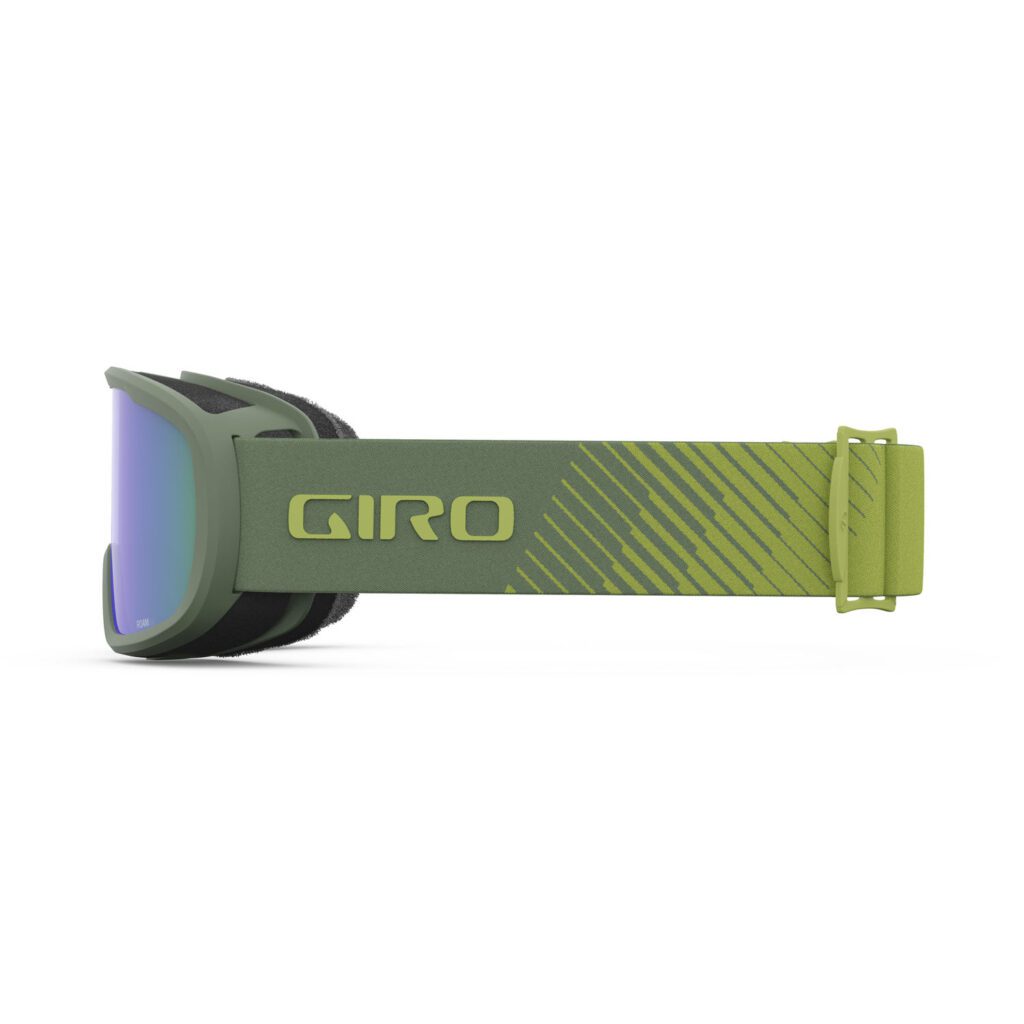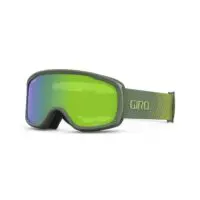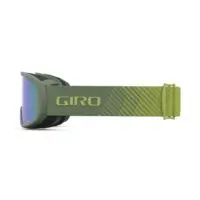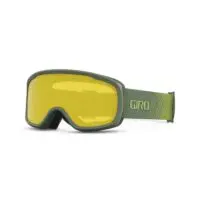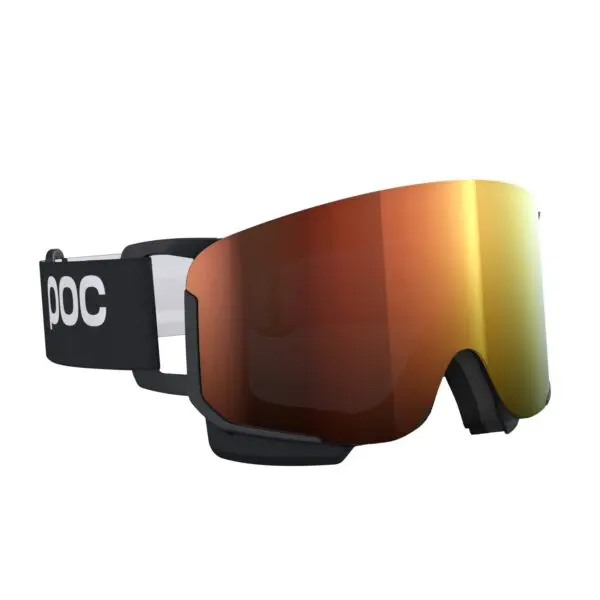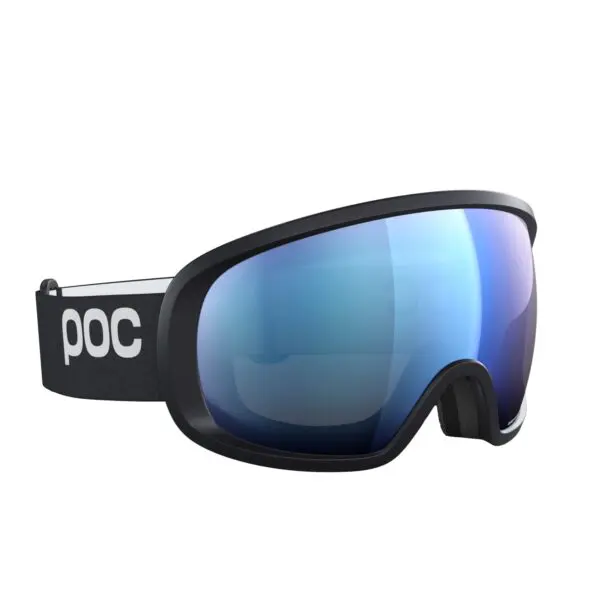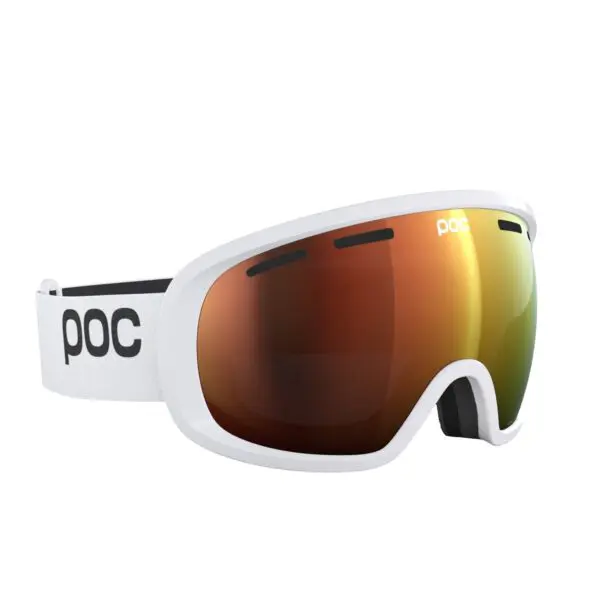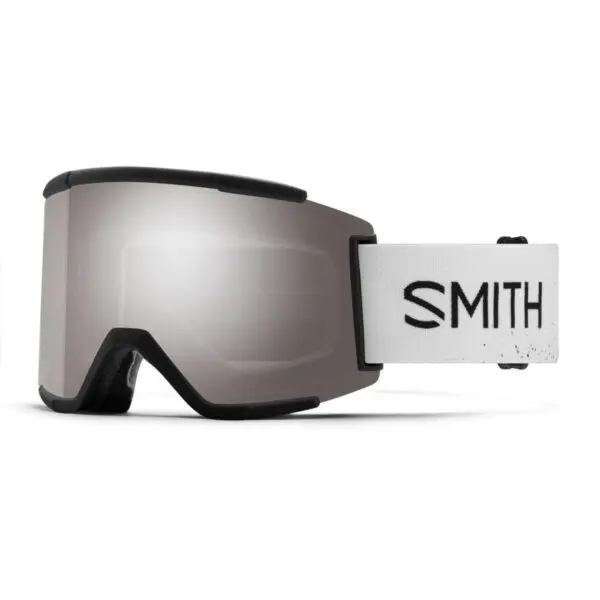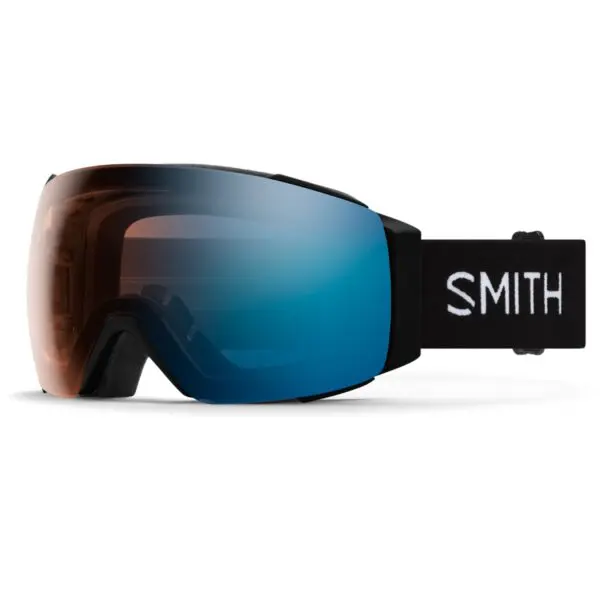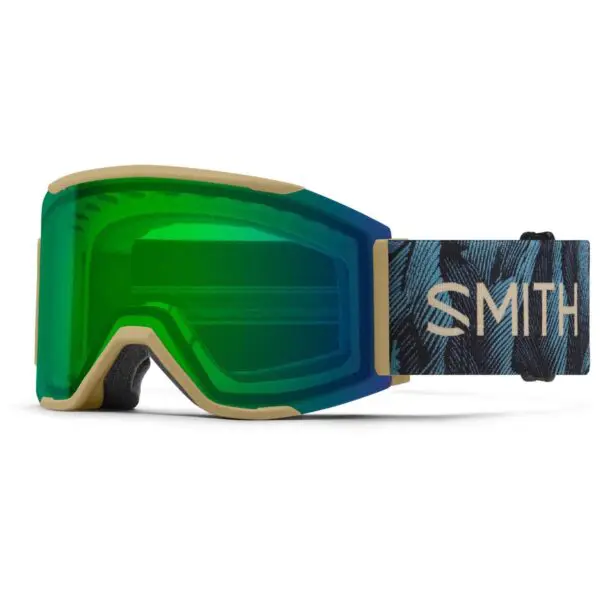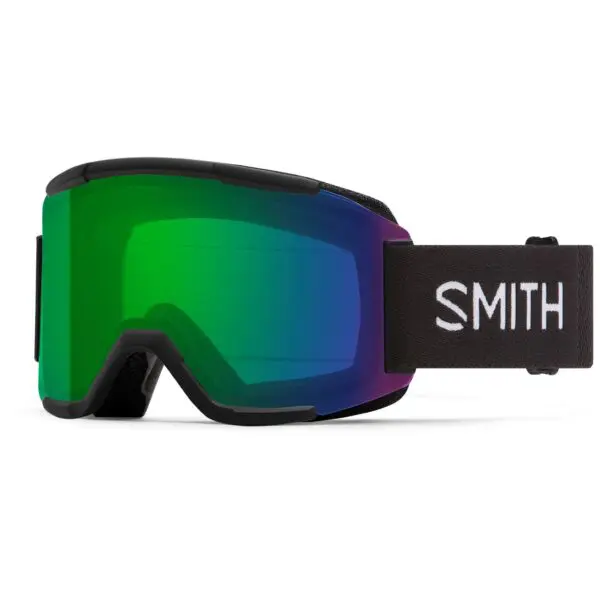Home / Shop / Accessories / Goggles / Giro Roam – Hedge Green Streaker
Giro Roam – Hedge Green Streaker
$149.90
$119.90
gnomes V.I.P Club offers members special discounts on current season products. It’s free to join. Login or Register.
Description
The Giro Roam is a stylish and comfortable medium fit goggle that has the added bonus of two lenses. So, when the light changes you are able to easily change the lenses to suit the weather. The EXV technology gives you a wide field of vision and the cylindrical shape helps minimise distortion so objects become clearer, all allowing you to be confident in your turns. The double layer fleece lined foam provides all day comfort.
Features & Specs:
Two Lenses:
Loden Green, VLT = 26%
Yellow, VLT = 77%
Expansion View (EXV) Technology
Perfect at Giro’s test lab, this ground-breaking frame design serves up unparalleled peripheral vision. They started with a helmet-compatible goggle, and then shaved the frame rim to make it smaller to optimize a massive lens focused on the best possible peripheral vision.
VLT
Each lens has a Visual Light Transmission, percentage unit that describes how much light the lens will allow through to your eyes. The higher the VLT percentage, the more light goes through (great for dark conditions), the lower the percentage the less light goes through (great for bright conditions)
Additional Features:
- Double layer fleece lined face foam
- Anti-fog treatment
- OTG
- Goggle bag
- Fit: Medium
Seeing clearly makes a huge difference in this sport, this guide will help you understand what the best option is for you.
Related Gear
We are a team of passionate skiers, our lives are entangled in a world of snow, mountains & ski paraphernalia. Take a look at how we can help you.
-

POC Nexal – Hydrogen White
$399.90VIP: $379.90 -

POC Nexal – Uranium Black
$399.90VIP: $379.90 -

POC Fovea – Uranium Black
$334.90VIP: $318.90 -

POC Fovea – Hydrogen White
$334.90VIP: $318.90 -

Smith Squad XL – Alice Robinson
$299.90VIP: $284.90 -

Smith I/O Mag – Black
$559.90VIP: $531.90 -

Smith Squad Mag – Smith X High Fives
$439.90VIP: $417.90 -

Giro Moxie – Stacked Peacock
$149.90VIP: $142.90 -

Smith Squad Low Bridge – Black
$239.90VIP: $227.90 -

Smith 4D Mag XL – Forest
$549.90VIP: $522.90
Buying guide
Seeing clearly makes a huge difference in this sport, this guide will help you understand what the best option is for you.
Lens Shape
Lenses come in two main shapes: cylindrical and spherical.
Cylindrical lenses are usually cheaper to produce, which means you can get a goggle with great features and save a bit of cash (not to mention they look pretty great as well).
Spherical lenses do have a few advantages over cylindrical lenses. They work in-line with your eyes in order to provide the best possible field of vision and the least amount of distortion. They also have fewer points at which the sun hits the lens, meaning reduced glare and no sun spots. The slightly larger area internally also creates more room for temperature control and airflow, killing off any chances of fogging.
Lens Tint
Lenses are all rated on a scale using VLT (visible light transmission) percentages. The higher the percentage the more light will be able to pass through (i.e. a great lens for a sunny day will be around 10-20% whereas a lens for overcast conditions may sit closer to 70-80%).
Nearly all lenses now are UV proof and many lenses are also polarized in order to provide the best protection from the sun. Sun reflects very harshly off the snow, and can easily cause fatigue and even damage to the eyes over time. Having a lens to protect against this is critical.
Photochromic lenses have the ability to change depending on the conditions. This gives you a broad range of conditions they work well in rather than a single percentage. This is a great option for people who want to stick to mainly one lens.
One vs. Two Lenses
If you are choosing a goggle with one lens, it’s usually a good idea to find one that offers a VLT that sits more towards the middle of the spectrum. This ensures the best results in a range of conditions. Because realistically no one lens can do everything, more and more goggles are starting to come with two lenses. This gives you the ability to cater to the conditions. Lens interchange has also been refined dramatically, and on most newer models takes no more than a few seconds.
Optics
Most brands now offer special optics within the lenses that give the lens dramatically better performance in varying conditions. With better contrast control, color enhancement, and no distortion, these new technologies bring out the best possible results from stormy to blue bird days. Vivid, Chromapop, Sonar, and Comp are among some of the names you’ll see these optics under. Each brand will have their own name, but they all achieve a similar goal.
Anti-Fog
All goggles come with some sort of anti fog solution on the lens or even etched into the lens. Either way, it is important to remember to stay away from touching the inside of the lens as much as possible.
Frame Sizing
Goggles come in all sorts of sizes. Fit is critical in order to get the best performance out of your new goggle. If the goggle does not fit flush around all the contours of your face, the air that can get in will cause your goggle to fog no matter how high-end it is. The best way to go is always to try a few on and see what fits best.
Women’s fits offer the same great features as the unisex options, but in a much better fit for smaller or narrower faces.
Comfort
Typically as you look at the range of goggles a more basic goggle will have a single layer of foam on the face, whereas a higher-end goggle will have multiple layers of different densities. This can make a big difference for comfort. If you ski often and are out for longer periods of time it is a good idea to get something that will be less likely to cause pressure points. This will also help with the goggle lasting longer.
Ventilation
Each frame has different ventilation systems. Having better ventilation can make a huge difference in anti-fogging, giving you much better vision. Most newer goggles also feature more heavily reinforced ventilation ensuring a longer life.
OTG (Over-the-glasses) Goggles
There are now many options for goggles that fit comfortably around your glasses by providing a recess in the frame. Look out for the OTG annotation to find this feature on different goggles.
Helmet Compatibility
One important thing to consider when buying goggles is how they fit with your helmet. While it may fit your face perfect, if a goggle doesn’t fit your helmet as well you won’t be comfortable skiing all day. Having a helmet that fits well with goggles is also an amazing air exhausting system, keeping things fog free. Most newer goggle and helmet brands tend to work well together for the most part.
Goggle Protection
Whenever you’re not using your goggles it’s important to keep them covered to avoid scratches and damage. A goggle case is usually the best option. These are a sturdy case that will keep your goggles protected from any impact.
Goggle sleeves come with most goggles and are another great option. Minimal impact protection, however they do keep them from scratching. These are also a great option for cleaning the lenses.
Goggle SOC provides a great solution to avoiding scratched lenses on your ski breaks, during apres-ski, and after the day is over. You can toss them in your pocket, and whenever you’re not using your goggles they easily fit over the lens.
